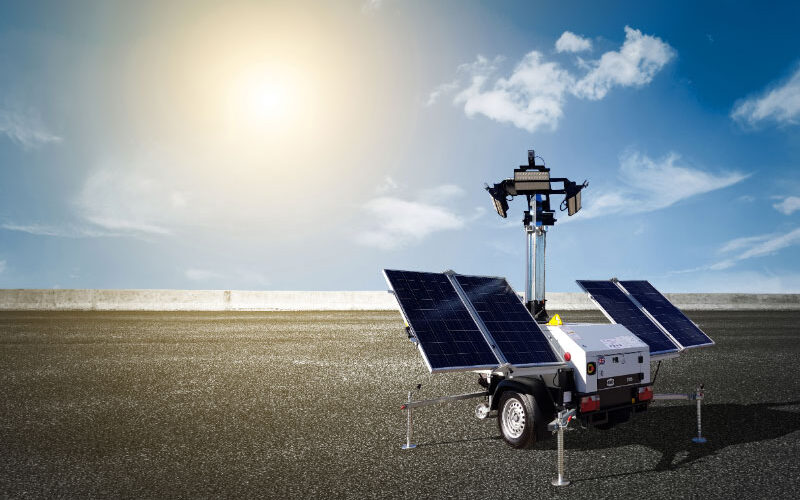
By Robin Brand, Chief Design Engineer, Morris Site Machinery
Harnessing the sun’s rays to produce cheaper, greener, renewable energy to replace our dependence on fossil fuels is the way to a brighter future and no longer a pipe dream.
Technological advances to make it a reality, coupled with growing public opinion to find viable alternatives to tackle climate change, are fuelling calls for change.
Our industry needs to take the lead by continuing to innovate and develop solar-powered site machinery equipment – and other eco-friendly solutions – that meet changing needs while remaining practical and economical.
It’s no small task but one that cannot be ignored as growing environmental restrictions, on issues like noise, emissions and waste, affect sites in all sectors. Like other renewable energies, solar power does not release any harmful emissions or pollutants.
At Morris Site Machinery we’re up for the challenge. We were the first and only British company to produce solar-powered lighting towers and have refined our offer with the SMC TL55 Solar and the new compact SMC TL60 Solar Trolley light.
In 2013 we recognised the need for a mobile lighting tower that had no noise, no emissions and almost zero running costs. With new low-voltage LED floodlights, the power source could be via batteries without the need for expensive and relatively inefficient voltage inverters.
The use of low-voltage solar panels was now feasible. We ventured into developing a mobile solar lighting tower. It was versatile, did not need refuelling and required less maintenance than conventional lighting towers.
The first model was a fast road tow mobile lighting tower, powered by four solar panels supplying power to lead acid batteries. At its launch in 2014, some recognised the advantages of no noise, no emissions, very low maintenance and no requirement for diesel, while others considered the smaller light output and made direct comparisons to diesel-driven units instead of looking at the benefits.
Fortunately, the advantages have won direct users and rental companies around and we continue to refine our solar lighting towers to widen their appeal. Improvements include 140-watt solar panels, higher output LEDs providing 31,200 lumens, PIR sensors (Passive Infrared Sensor) allowing the lights to only operate when required and LED dimming down to 10% of the power consumption extending the operating time.
On the TL55 Solar, there is the option of fitting solar-powered CCTV equipment.
As local authorities look to protect the environment, along with further possible legislation on emissions in inner cities, demand for solar-powered lighting will continue to grow. We need to continue to innovate to meet this demand.
In 2017 we developed the SMC TL60, a generator-powered and very compact small trolley light that could be manoeuvred into areas with limited access. We went on to replace the diesel-powered generator with solar panels to create the TL60 Solar Trolley light.
As compact as the original TL60, it has three 45-watt polycrystalline solar panels. Two panels fold down to aid manoeuvring and transportation. It has a 30-watt LED floodlight providing 5,094 lumens. A 90Ah lead acid battery is fitted with the option of a 230-volt or 110-volt charger.
There is also the option to have a spare 90Ah battery mounted within the unit which can be quickly connected into the circuit allowing the first battery to be removed for charging if need be. It is useful should the unit need to operate for a period without the benefit of power from the solar panels if the machine is in an area where the solar panels cannot function fully or not at all.
The positive reaction to the TL60 Solar at the BAUMA 2019 show in Munich shows it has a bright future and increases our commitment to solar.
Solar is a viable option as it works even in cloudy weather. It is all down to light; the key is having backup options and storage systems.
Our Research and Development department and Design Engineers are working on how to adapt solar power for other products. We also have hybrid models in development combining diesel and solar.
The challenge for some is that solar equipment is more expensive than diesel at the outset but on a positive note it costs less to run. We need to encourage people to take the longer-term view and continue to provide the type of equipment that makes that choice easier.